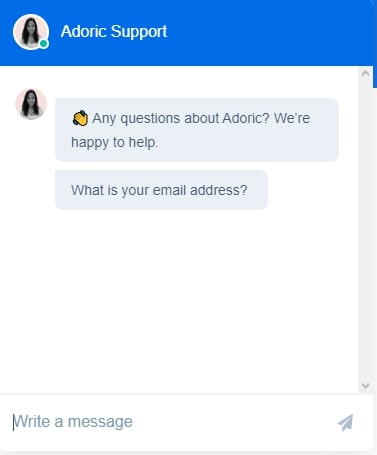Do you want to reduce your customer churn rate, but unsure how to go about it? You’re in the right place – you are about to figure out how to go about this.
Acquiring new customers for your business is probably your topmost priority as an entrepreneur. That’s quite understandable. After all, without a steady stream of paying customers your business will go belly-up.
But the question is, how many of those customers eventually stay in the long run?
What percentage churn – that is, quit doing business with you – at the end of the day?
If you haven’t given that much thought, it’s about time you did.
The reason is simple: As shown by studies, it’s 5 to 25 times more difficult to acquire a new customer than retaining an already existing one.
So, while expending time and money trying to acquire new customers, it’s super-important you put in more effort into retaining the ones you have.
For your business to thrive, you must keep your churn rate low; as close to zero as possible.
Never heard of churn rate? Not to worry, in this post, we’ll explain what it is and ways you can keep it at the barest minimum.
Here are the points we will be covering in this post
- What is customer churn?
- Why knowing your churn rate is important
- How much churn is too much?
- Why do customers churn?
- How to reduce customer churn
- Conclusion
What Is Customer Churn?
Customer churn, or customer attrition, happens when customers who previously did business with you or subscribed to services suddenly stopped. The frequency at which this happens is known as churn rate.
Usually, it’s measured over a given period of time – say a month.
To calculate your churn rate, simply divide the number of customers your business lost by the number of original customers you had at the start. Then multiply by 100.
Mathematically speaking:
Churn rate = Number of customers lost over a period of time X 100
Total number of customers at the start of the period
To put this into practice, select a time frame, look at how many customers stopped using your products or services within that time, and divide that by the number of existing customers you had at the start of the subscription. Then you multiply all that by 100 to get your churn rate percentage.
For example, let’s say at the start of the previous month you had 154 customers. Of this number, 18 canceled their subscription as the month ended.
To calculate your churn rate, simply divide 18 by 154 and then multiply by 100. This would give you 11.69%
This formula looks pretty simple, but it isn’t straightforward as it seems.
The reason is that your customer base will continuously keep changing. At every instance, you will have four sets of customers:
- Those signing up for the first time
- Established customers looking to renew their subscription
- Customers who out of dissatisfaction or insufficient funds will churn.
- Churned customers looking to start from where they left off.
However, customer churning is inevitable, so your best bet is to keep it as low as possible.
Why Is Knowing Your Churn Rate Important?
Customer retention is used to measure the strength and success of a business.
That is why putting in the effort to retain your customers is so important. It is 5 times more expensive to attract new customers than it is to retain your current ones, according to Forbes.
Even a small 5% increase in retention can lower costs by as much as 10% and increase profits by 20 to 90% according to a study by Bain and Company.
So, while you are busy hunting for new leads and customers, see to it that you put in extra efforts in retaining your established customers.
If you want to build a successful business, you need to take care of your biggest assets: Your customers.
How Much Churn Is Too Much?
It’s expected that at some point you’ll lose customers, but what percentage of churning is acceptable?
According to Lincoln Murphy of Sixteen Ventures, a 5 to 6 percent annual churn rate is “acceptable” and less than three percent is considered “magnificent.”
Knowing your churn rate will help you understand what you’re brand’s strengths and weaknesses are.
Plus, with this knowledge, you can accurately predict the number of customers, subscribers, users, etc. that might drop off each month. It’ll also help you understand why they’re considering leaving so you can do something about it before it’s too late.
Why Do Customers Churn?
Are too many customers canceling their subscription? You must know why they are doing so.
Customers can leave your business for several reasons. Some of those reasons include:
- They found something better than what you have to offer
- You did not deal with their complaints or failed to deliver the product or service as advertised
- Poor customer relationship on your part
- You provided poor customer service
- They just couldn’t afford your products anymore
With this information, you can now formulate customer-retention strategies to help manage your churn rate. The following steps will help guide you:
- Measure your company’s health and long-term prospects.
- Understand whether you are improving customer retention.
- Identify changes that adversely affect customer retention.
- Calculate the customer lifetime value.
- Identify loyal customers.
- Plan and forecast your business prospects for the future.
Your churn rate is too important to ignore so we’ve outlined 15 reasons customers churn, and how you can fix it. This will help to decrease the rate at which customers abandon your business. It will also help to increase your revenue.
How to Reduce Customer Churn Rate
1. Determine And Analyze Why Your Churn Is Happening
It sounds obvious, but before treating an illness, it is necessary to identify the root cause of it.
That is the very first thing doctors do, isn’t it?
Whenever you experience churn in your business, there are three simple ways you can find out why.
- Send a customer an exit survey.
- Call the customer.
- Send a personalized email.
Of these three, calling the customer is the best line of action. Placing a call to a disgruntled customer is indicative of your genuine care for them.
Only ask relevant questions.
Call and ask them why they left. Their answers will go a long way in helping you figure out what went wrong and how to make amends.
It’s also worth considering the use of surveys to gather your customers’ opinions.
2. Offer Long Term Contracts
Instead of the month-to-month contracts, create subscription packages with a longer duration. Maybe six months, a year, or more.
Offer long term contracts at a discounted price. By using this model, your customers will have a chance to access the products or services and see first-hand the benefits it brings them and their business while saving some cash.
Consequently, once they reap the benefits, they will undoubtedly stick around for the long haul.
“Reach out to customers who have closed their accounts and let them know about your long-term packages. For best results, personalize the email send as much as possible. You can also consider contract lifecycle management software that can help you automate creating and signing contracts.”
3. Ask For Customer Feedback
Ask your customers for feedback, find out what makes them happy. Once you’ve found it, do it, keep at it. That’s how you build a loyal customer base.
Adding a review section to your website is a terrific strategy for gathering input from customers who terminated their contracts and current customers.
Replying to those reviews through a customized email will encourage them to share more inputs with you.

When responding to a customers’ review or queries, be sure to treat and address it with gratitude and respect, regardless of the nature of the feedback (be it a positive or negative one).
You could also just reach out to them and ask for their feedback. Reaching out to them would help you nurture your relationship with your customers, earning their loyalty.
Talking with your customers can help you learn where they are getting stuck and guide them through the solution.
4. Identify Your Weaknesses
When you review your customers’ feedback you’ll be able to determine what your business’ strengths and weaknesses are.
Listen to the complaints your customers make. This will help to unmask bigger problems your products might have.
Once you’ve identified them, you can get started on making the necessary improvements.
Strive to address all issues raised by customers to better your product and retain your customers.
5. Go The Extra Mile
Going above and beyond for your loyal customers can go a long way in reducing your churn rate.
Offer exclusive discounts or rewards or send them a personalized email showing your gratitude.
You could also reach out to offer incentives to unsatisfied customers.
6. Segment Your Customers
Segmenting your users into different categories can help you target them accurately and accordingly. It’ll also make it easier for you to recognize which group is churning too frequently, and you can begin addressing their concerns.
7. Monitor Customer Engagement
A sign that a customer is on the verge of churning is reduced product or service usage. So, keep an eye on that.
Also, be observant enough to know to notice when a customer stops visiting your website.
Identifying customers who show signs of churning and reaching out to encourage them to increase their interaction with your product can reduce your churn rate.
You could help them with an issue they’re having with your service or provide them with tips on how to use a new feature, or even how to get the most out of a feature they already enjoy.
If you’re still having a hard time keeping your customers around, consider hiring a customer retention team.
The goal of a customer retention team is to help companies retain as many customers as possible. The more successful they are at retaining your customers, the more revenue you’ll generate and the more sustainable your SaaS business will be.
8. Simplify The Onboarding Process
The first contact a customer will have with your product or service is during the sign-up process. Therefore, this step needs to be as simplified as possible.
If your onboarding process is complicated or overwhelming, make it a priority to take measures to simplify it.
If you don’t, it might deter potential customers from completing the sign-up process and/or opting for another SaaS provider altogether.
Consider adding a visible progress indicator so that they know how far they’ve already gotten.
9. Reward Your Customers
Rewards, such as discounts or free upgrades, can make the customer feel valued and motivate them to extend their contract.
It can also encourage them to refer others to you.
Rewarding your customers doesn’t have to cost a fortune. A simple handwritten note would suffice.
10. Enhance Your Customer Service
Poor customer service will result in a negative customer experience and that is sure to drive them away. Improve your customer service department, to reduce your churn rate.
It’s important to be responsive. If it’s possible, respond to your customers’ queries within 5 minutes.
For example, here at Adoric, we offer chat support to our customers. Customers who have upgraded to our pro plan get enjoy phone support.

Hiring a large customer service team is ideal but it can be expensive. This makes a chatbot feature a better alternative.
The idea here is that you can keep your client assistance experience predictable in all cases with automated responses. With a live chatbot assistance alternative, you’re guaranteed a consistent and reliable response each time.
Many companies are adopting this new technology and utilizing automated chatbots to sell products or help their customers. These are great because they can work alongside humans to complete repetitive tasks without tiring.
Providing excellent customer service can help you spot and fix potential pitfalls, as well.
11. Monitor the Competition
Keep an eye on your competitors to see how they are performing in terms of customer satisfaction.
If they are performing better than you, then you are at risk of losing your customers. Understand what they’re doing that you aren’t and start implementing it.
You want to be sure that your products or services are as valuable to your customer as possible so that they don’t leave. Having something valuable to offer prevents them from giving your competitor their business.
Also, understand what your customers need and value and give it to them.
To attract and retain customers, evaluate what makes you unique and expand on that attribute. Identify what makes you stand out from your competitors and flaunt it to gain a competitive edge.
12. Actively Market Your Product
Social media is a great tool you can leverage to market your business.
Spend time making others aware of what you offer, why it’s the best, and what they would benefit by using it.
Remind your existing customers of your value by keeping them up to date with what’s going on behind the scenes. Are you adding a new feature? Is there an upgraded version of your product coming soon? Let them know!
Keeping them in the loop will help you build a rapport with your customers, thus getting them involved with your brand and reducing your churn rate.
13. Ineffective Pricing
If your products are too high cost-wise, you risk losing your customers for good.
On the other hand, if it’s too cheap they might doubt the quality of your product.
Be sure to properly price your product to ensure you aren’t charging more than they are willing to pay. Adequately pricing your products can help lower your churn rate.
For example, here’s our pricing package.

14. Find Out What Happened to the Customer
Churning can result from something happening to your customer.
If they go out of business or die, it’ll lead to customer attrition and this is a factor that is out of your control. There’s simply nothing you can do about it.
They could also get acquired by a bigger company. You want to ensure that the service you offer is so invaluable that, if this is the case, you don’t get left behind.
15. Market to the Right Audience
Customers sign up to do business with you for a reason: to achieve a certain outcome. If your product fails to help them reach their desired outcome, they’ll churn.
Your product could be missing a key feature that the customer requires or they could have experienced challenges integrating your product with other products or systems that they use.
Their failure to achieve their desired outcome with your product doesn’t necessarily mean it has a problem or that it’s a bad product. It could just mean your brand and the customer weren’t a good fit. Which is why it’s important to market to the right customers.
It’ll be beneficial to you to market to the right audience right out of the gate. Identify your ideal audience and dedicate time and resources to targeting them.
This will sound obvious, but it’s worth mentioning: Don’t engage in shady business practices. Always deliver on your promises. Ensure your product(s) or service(s) is at the level you portray in your advertisement or even better. Customer satisfaction is the key to customer retention.
Conclusion
Customer churn is inevitable – the best you can do is to keep it to the possible barest minimum.
Thankfully, there are a lot of things you can do to improve your customer retention and reduce churn rate.
We’ve shared most of them with you in this post. Your job now is to implement. And, of course, you need to be patient with the process to see results.



